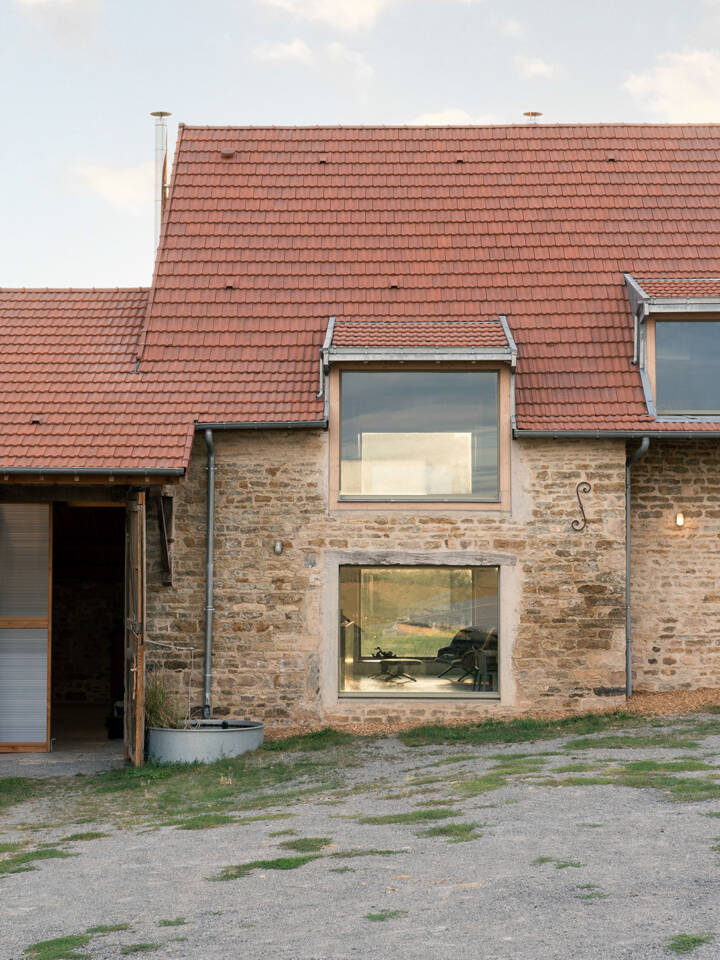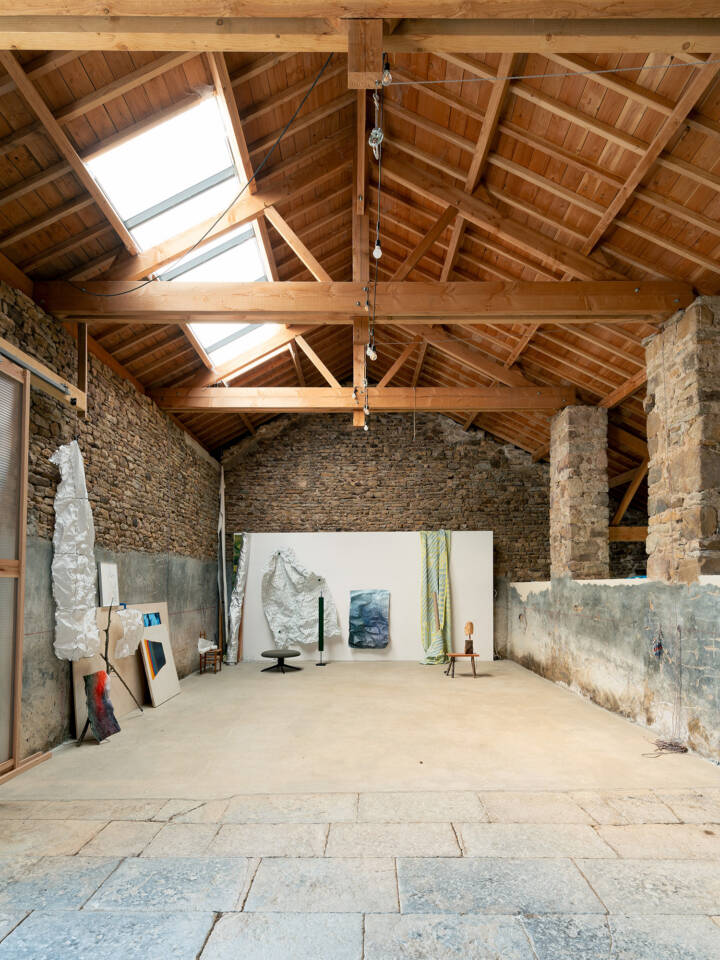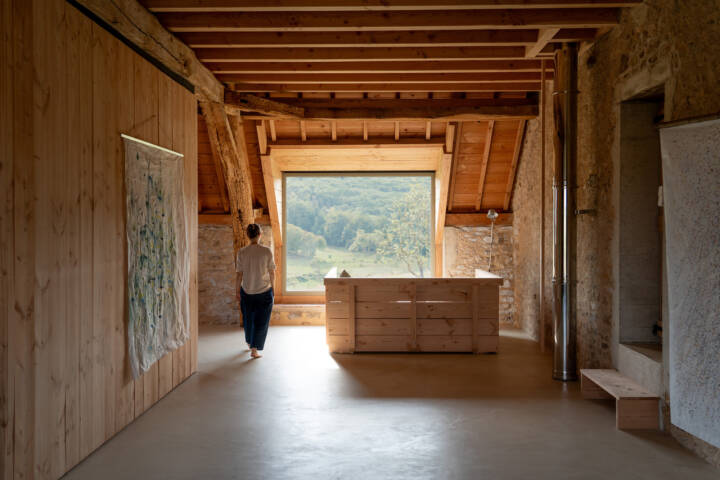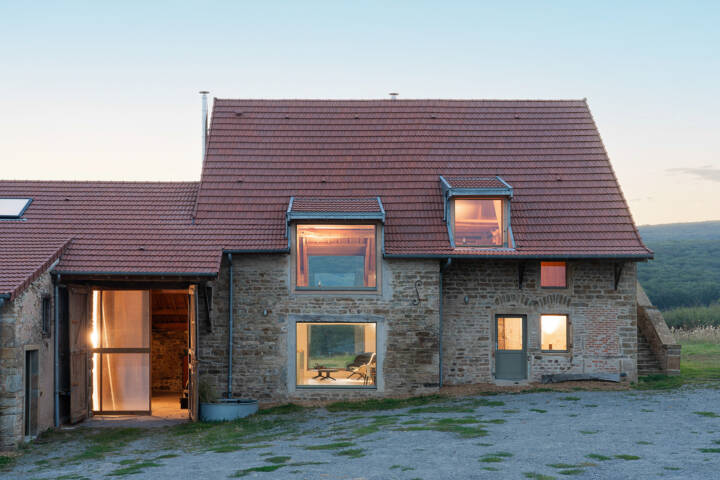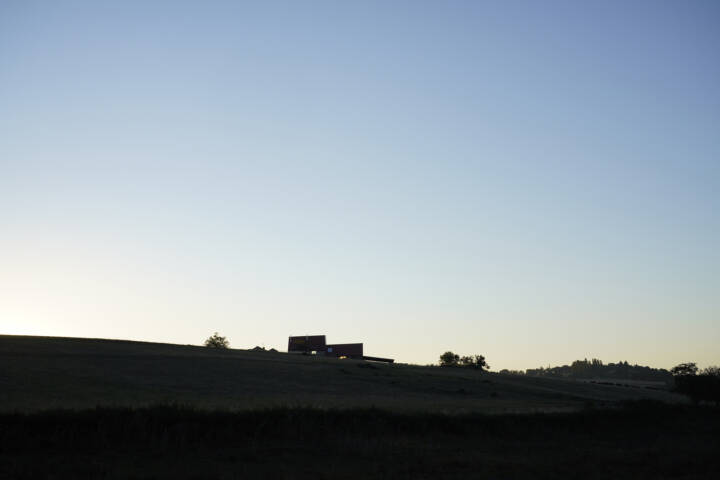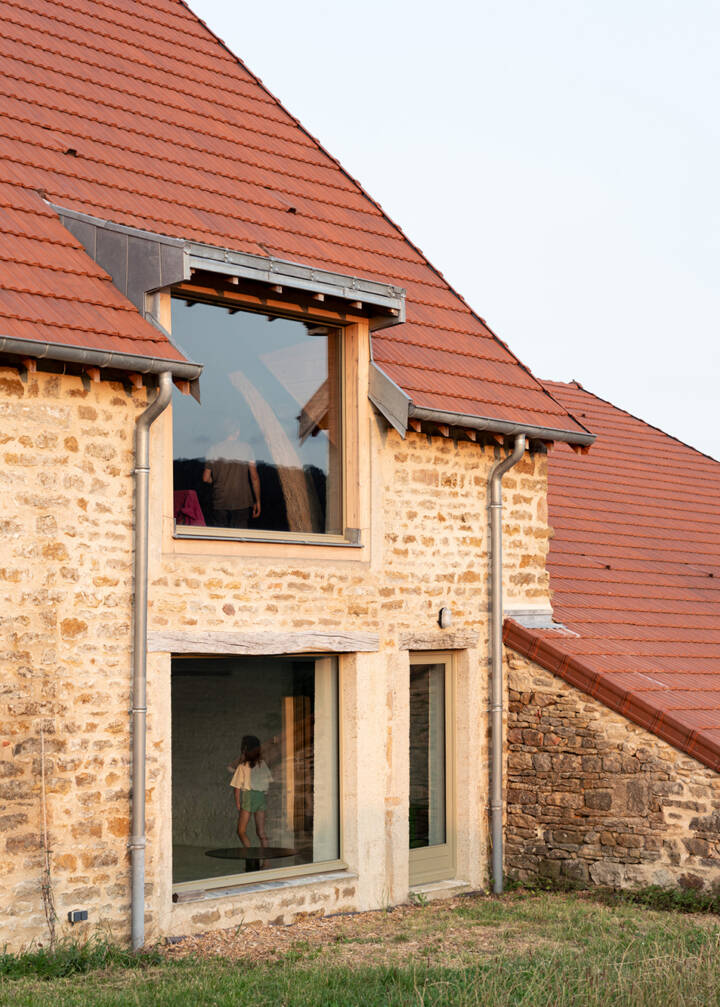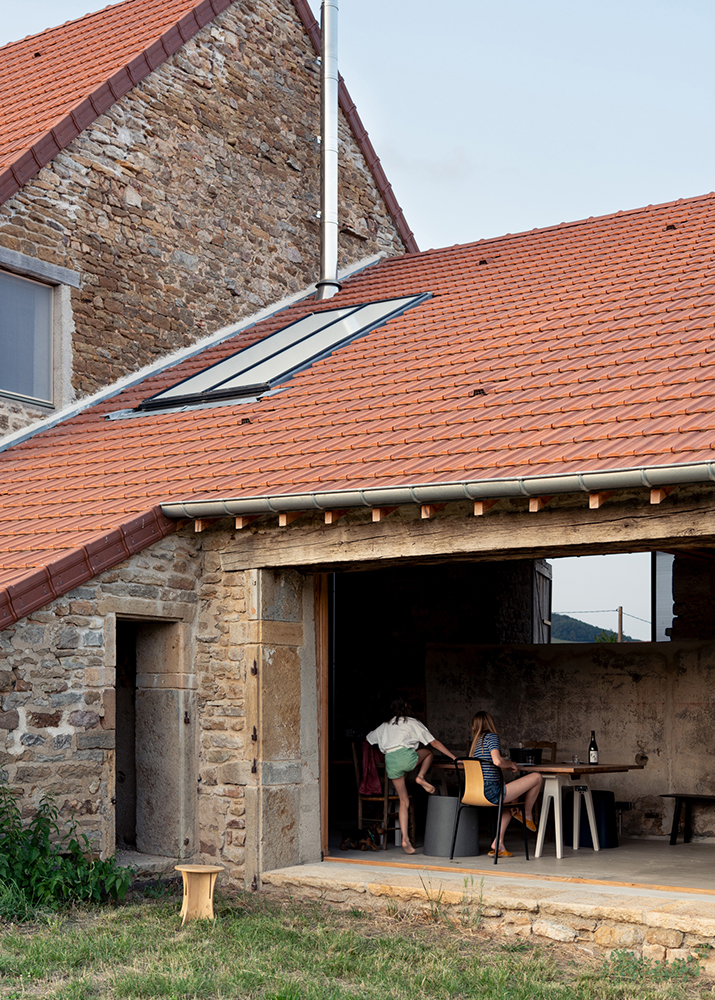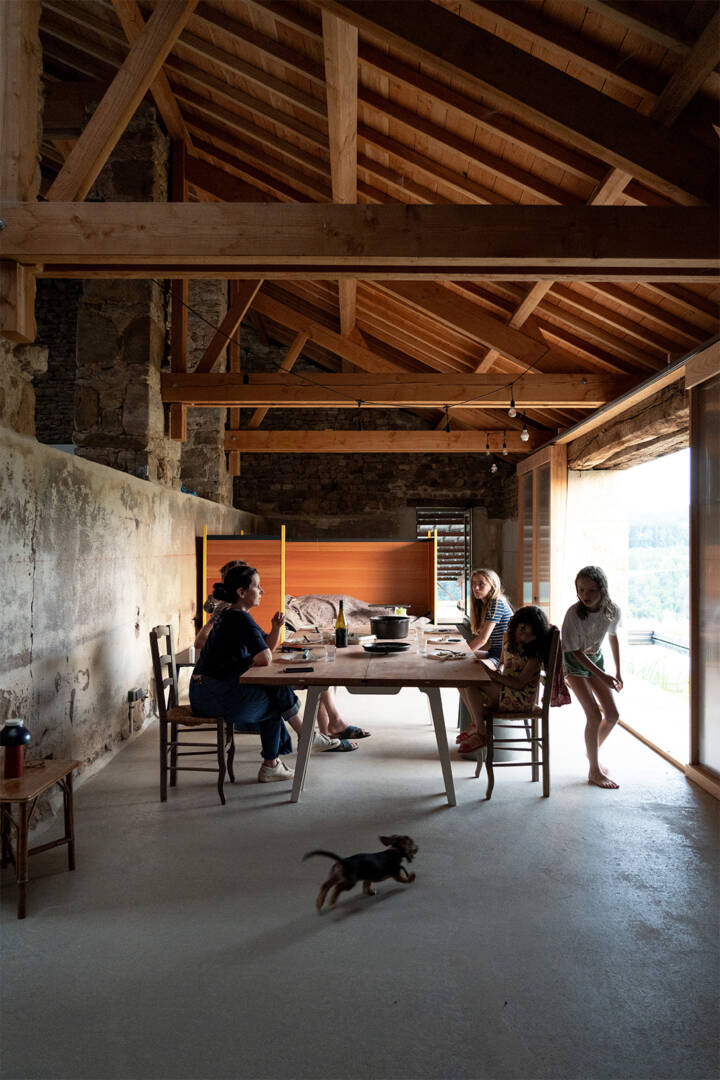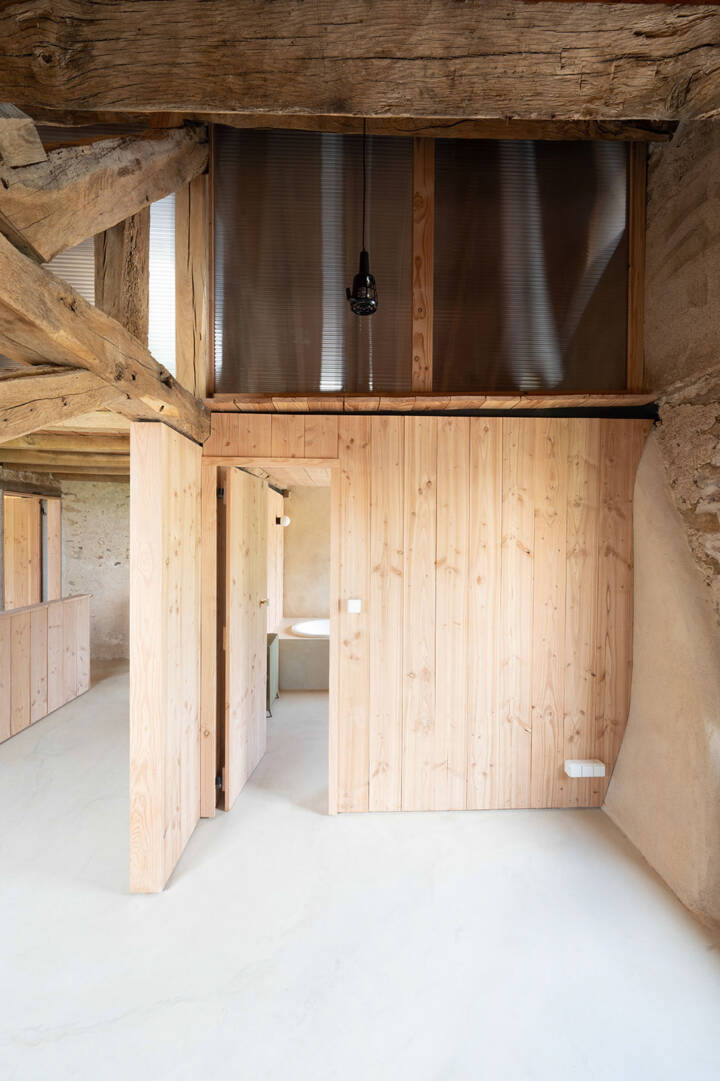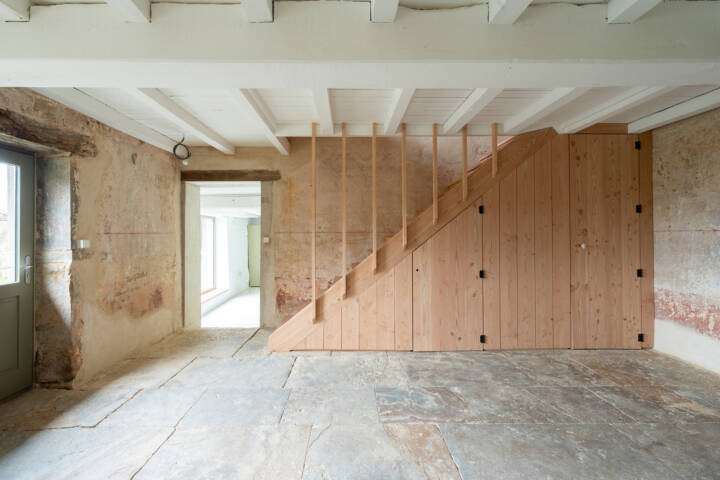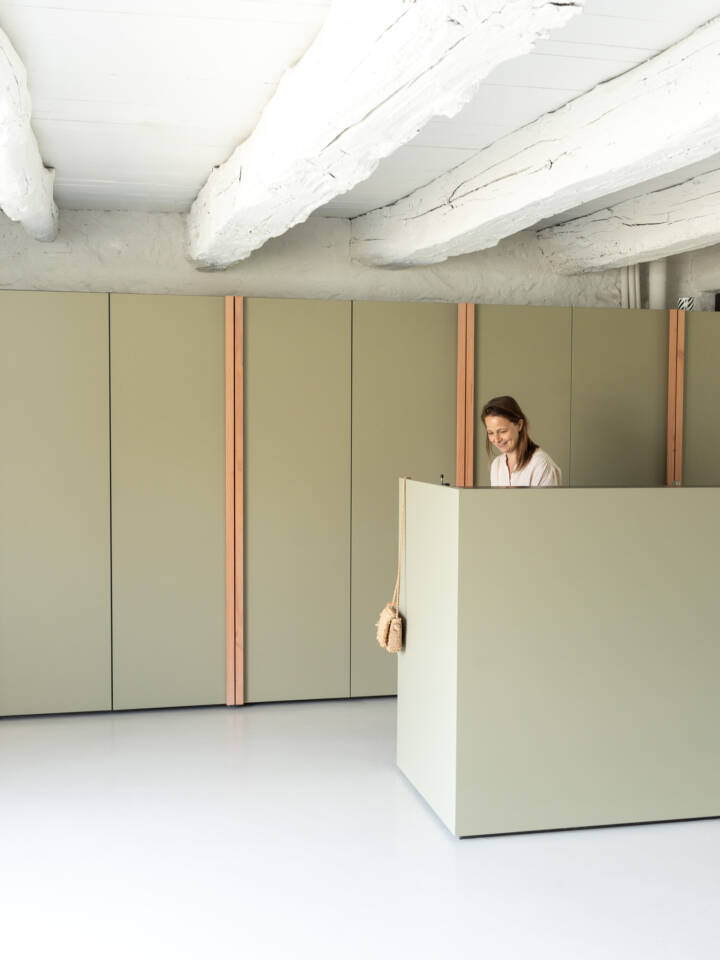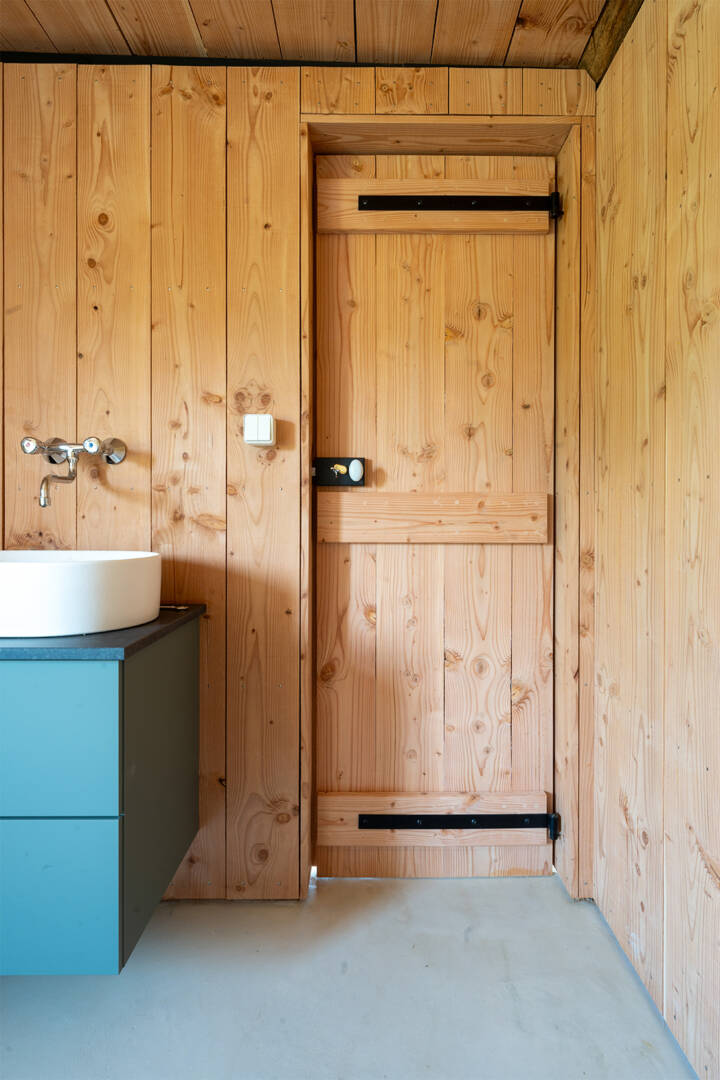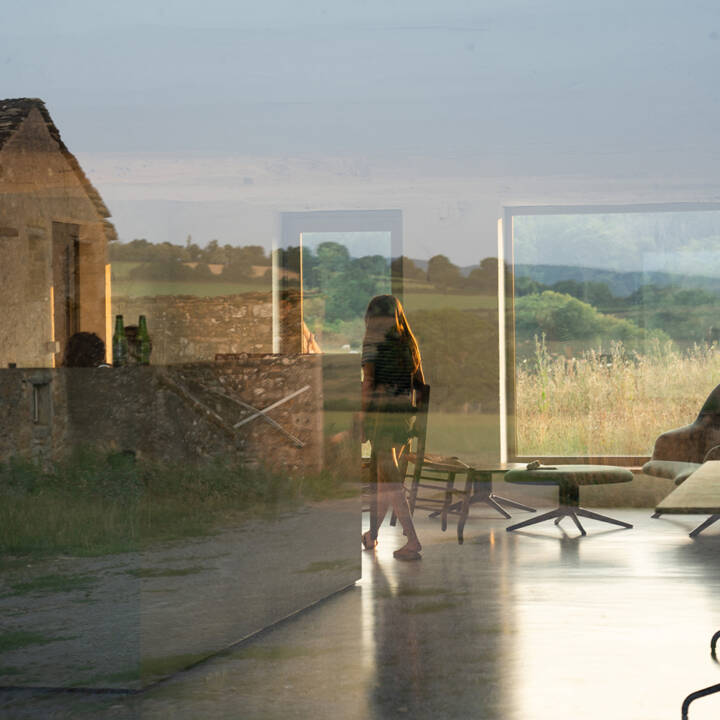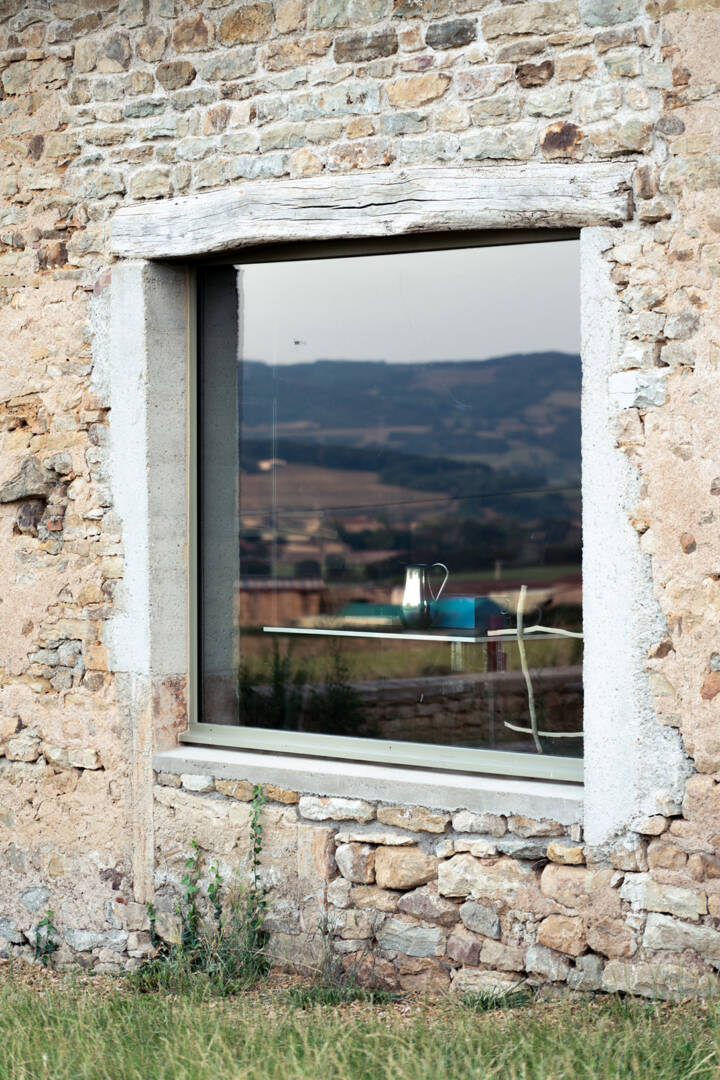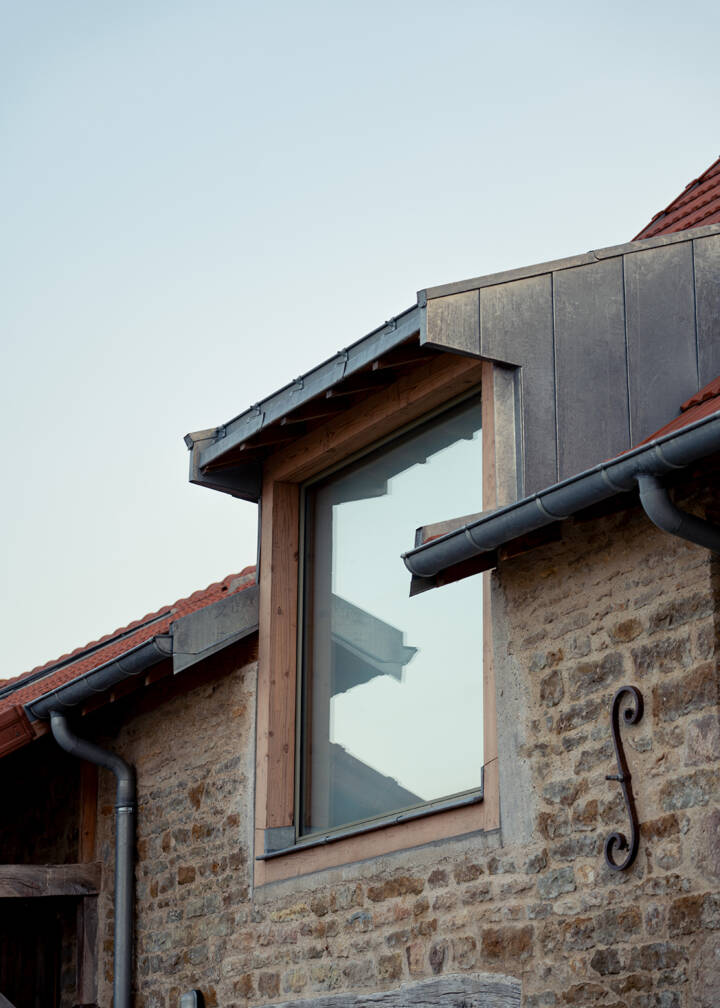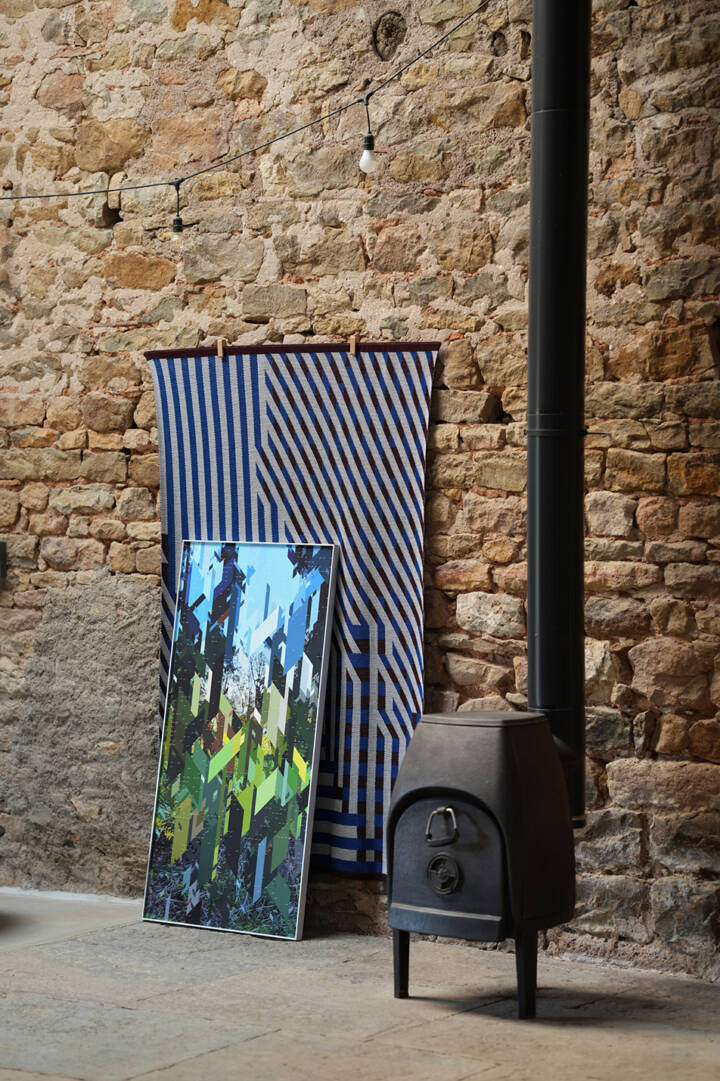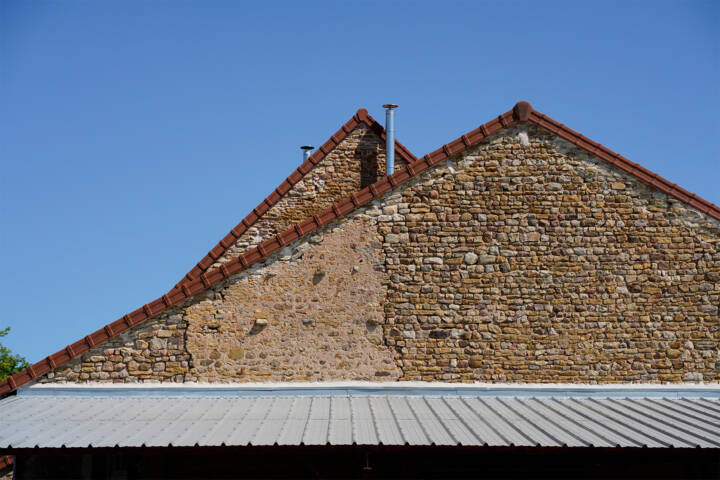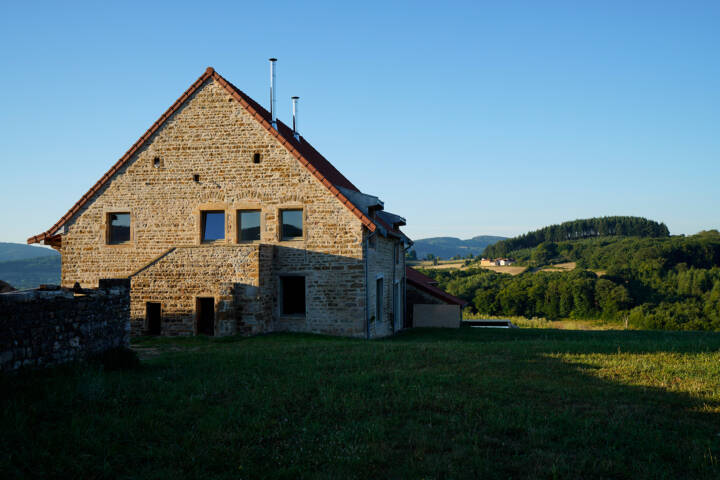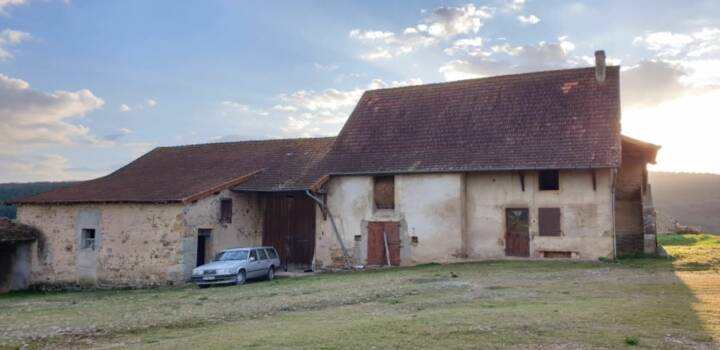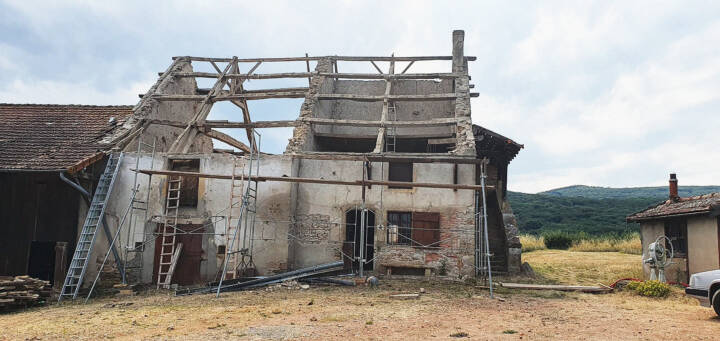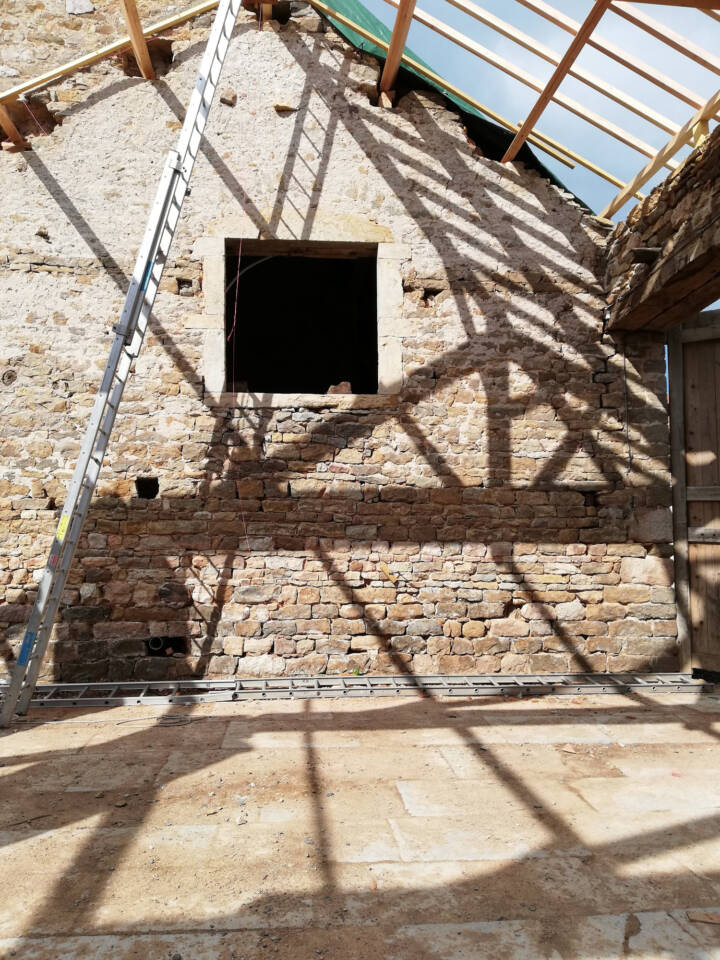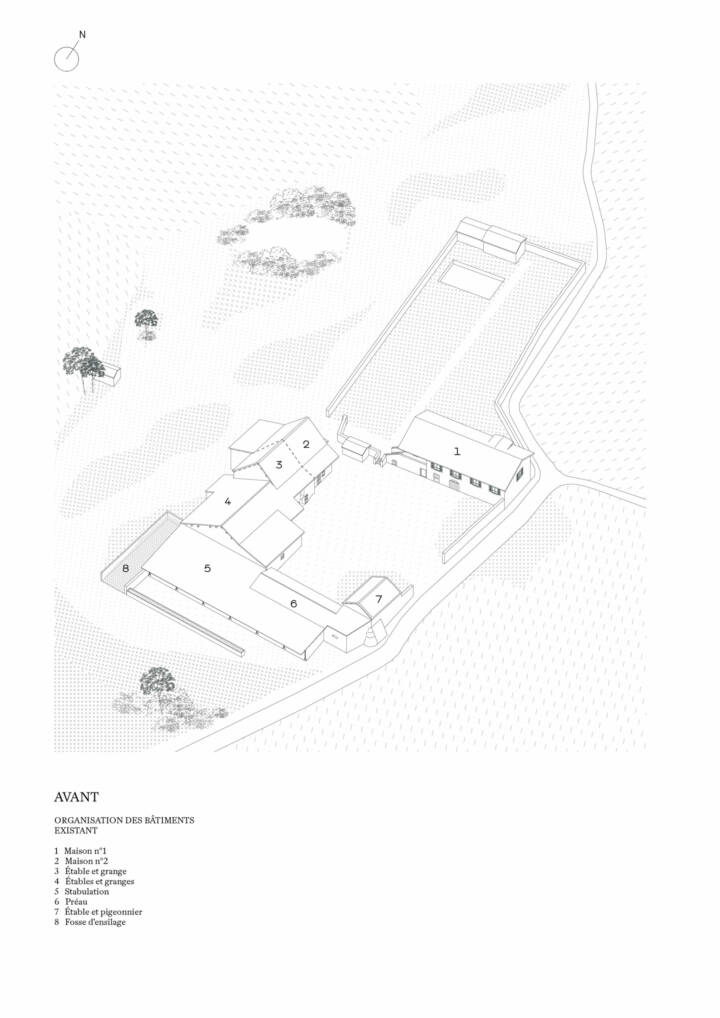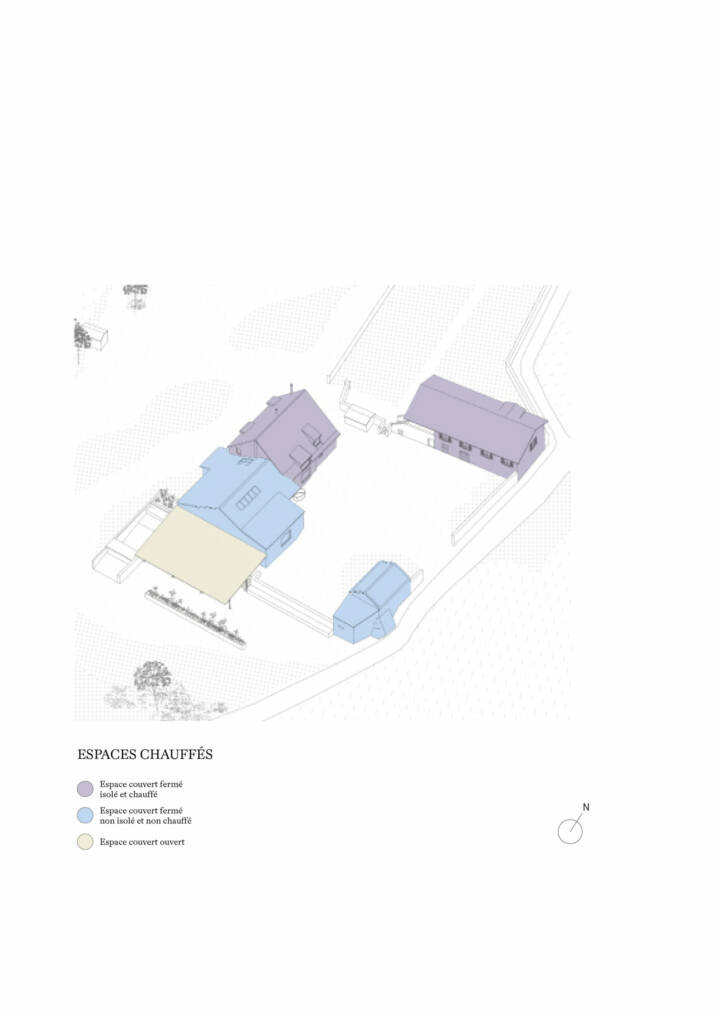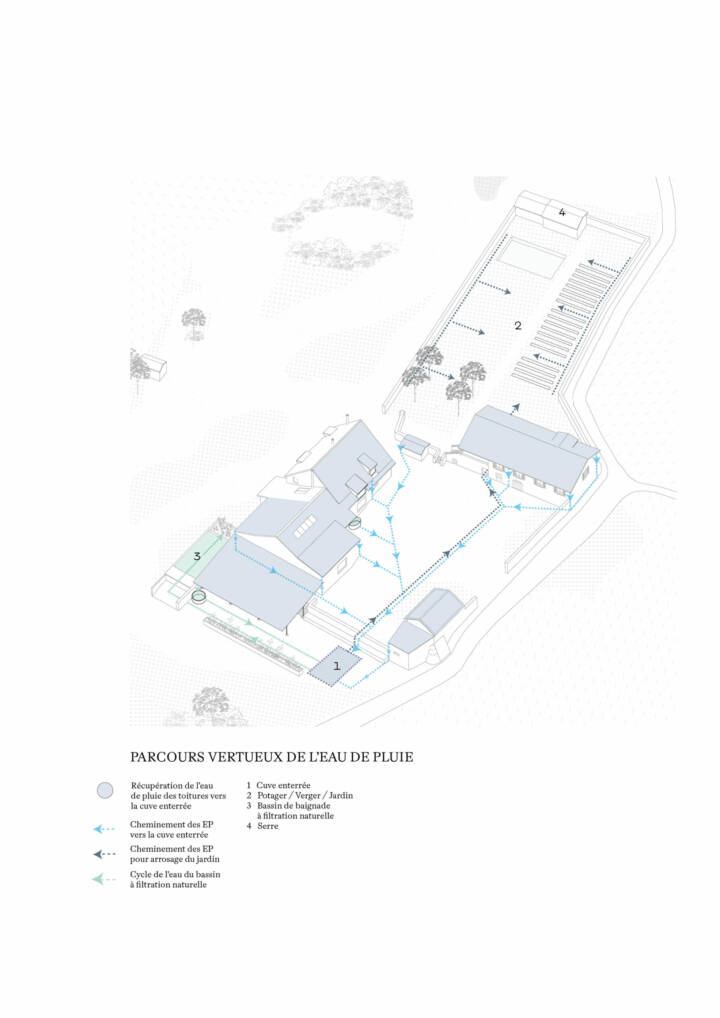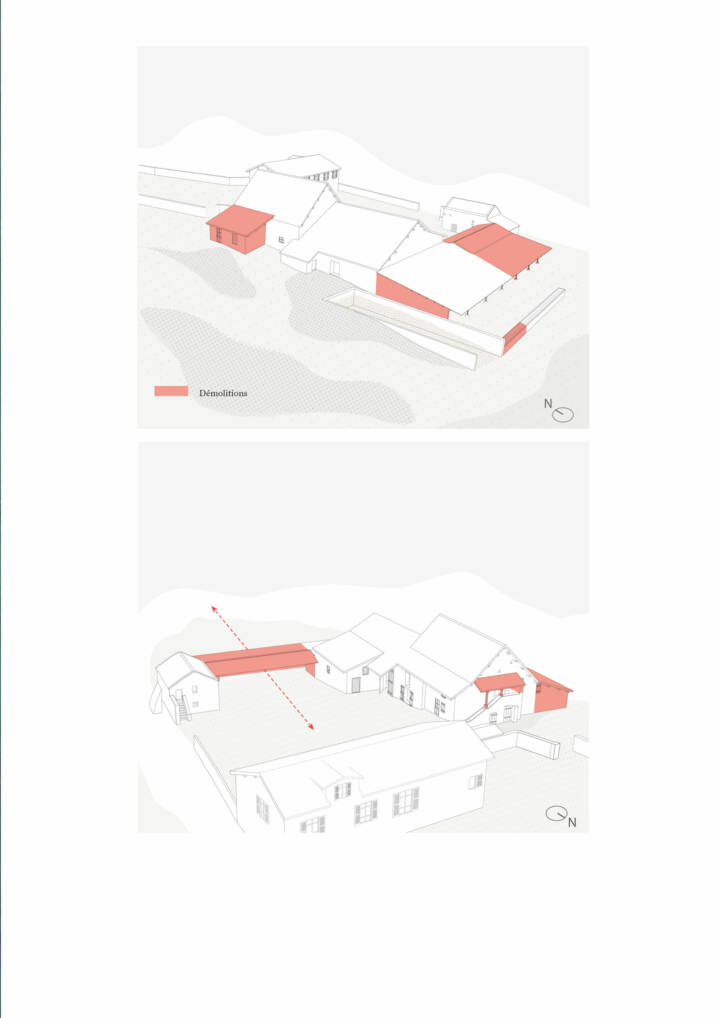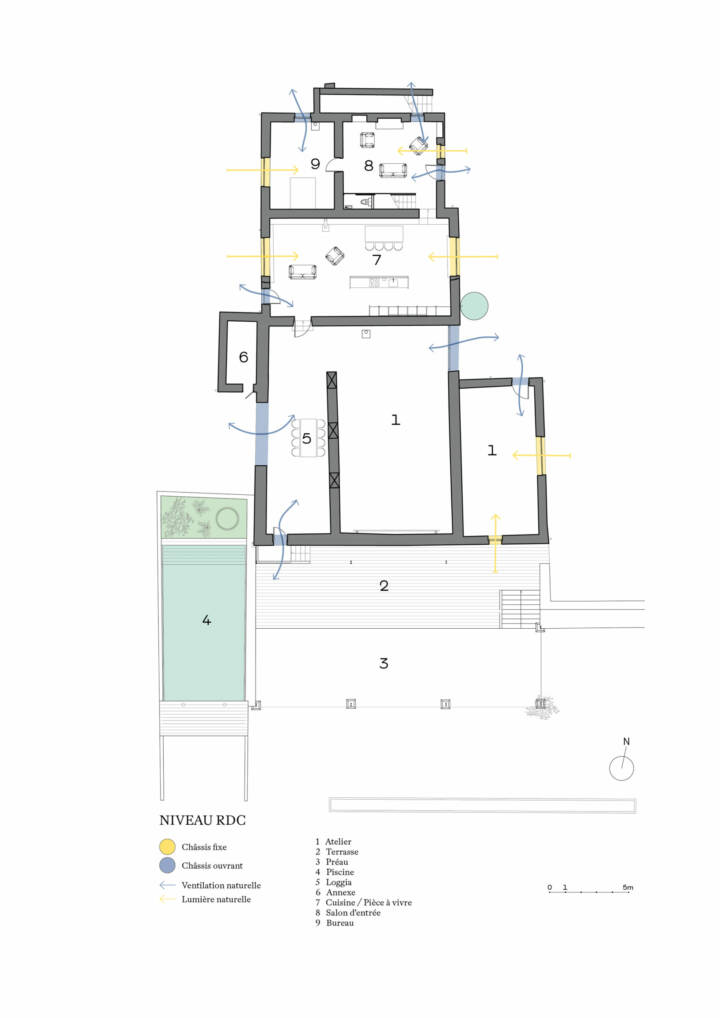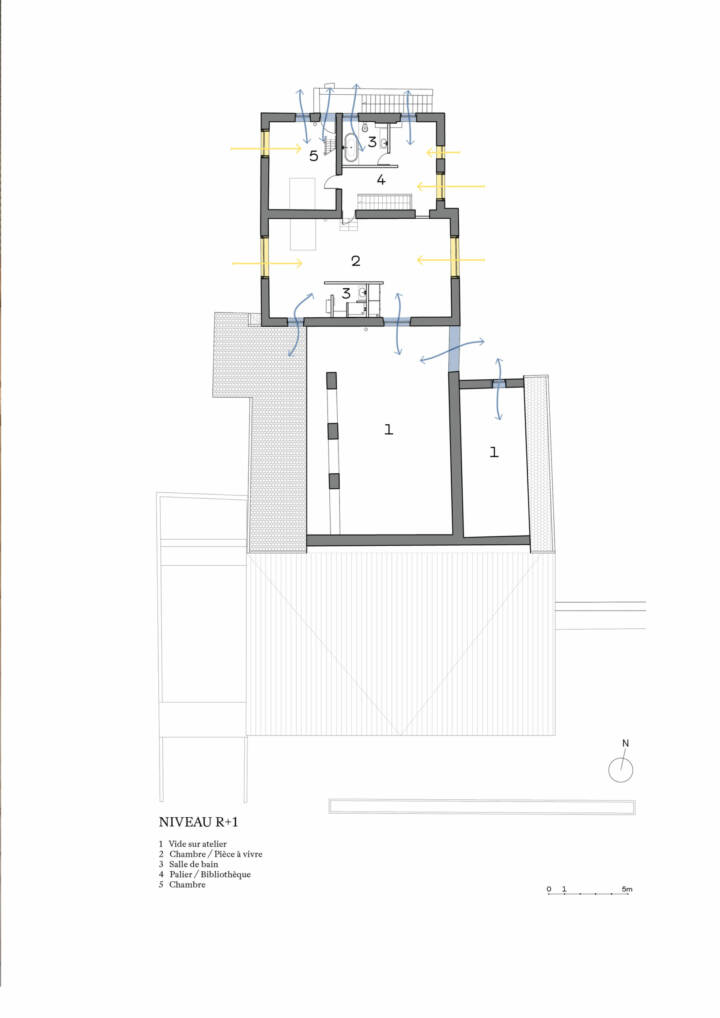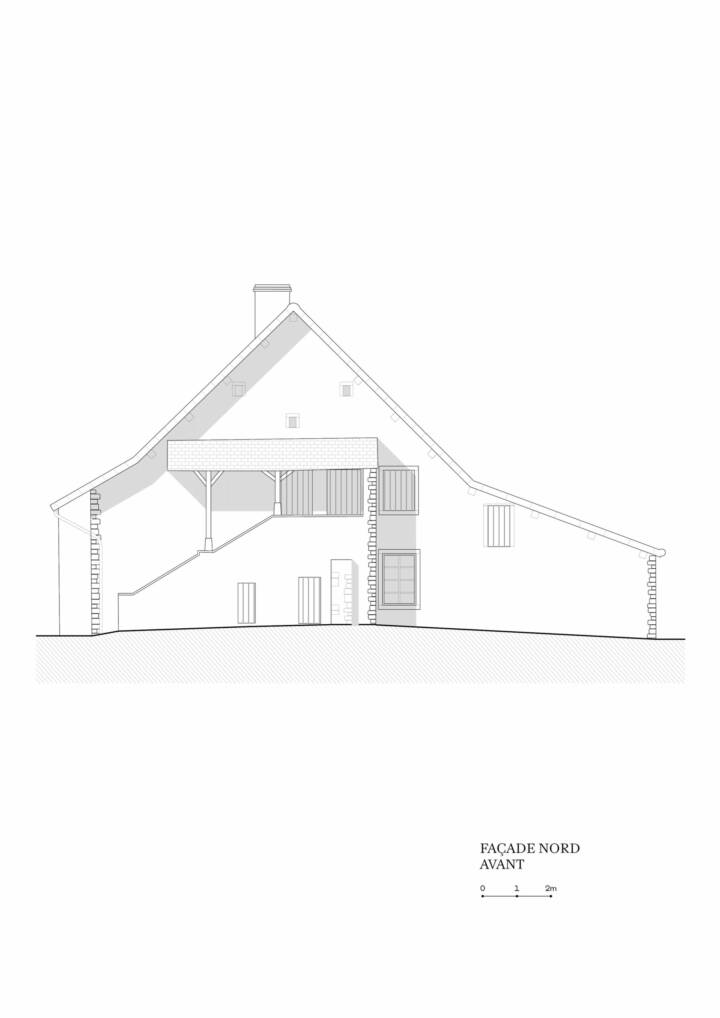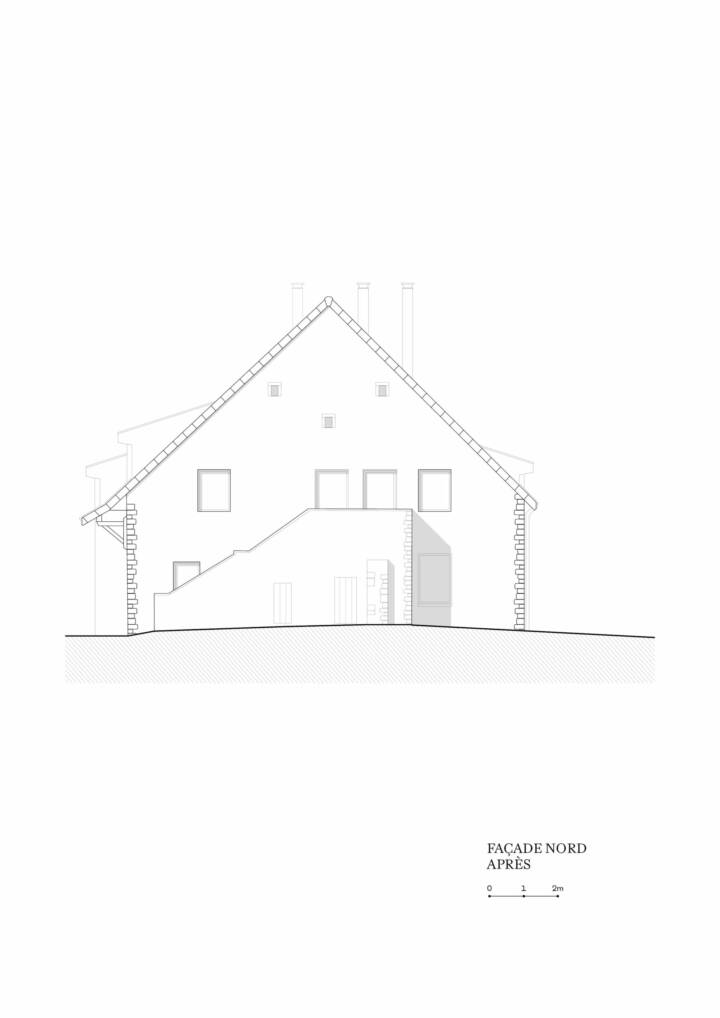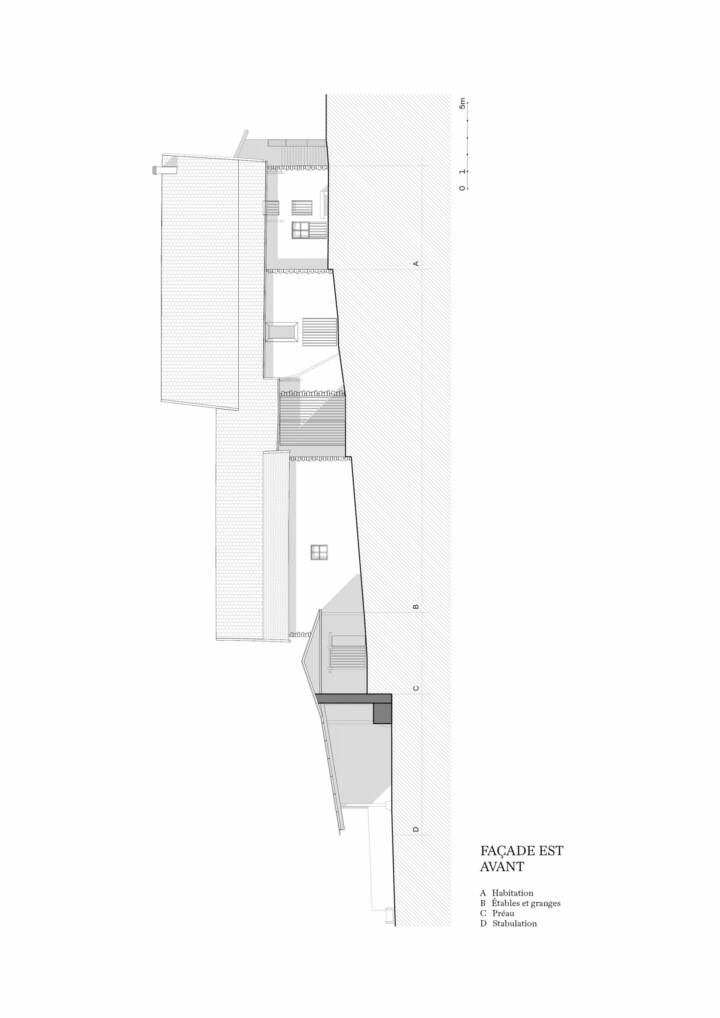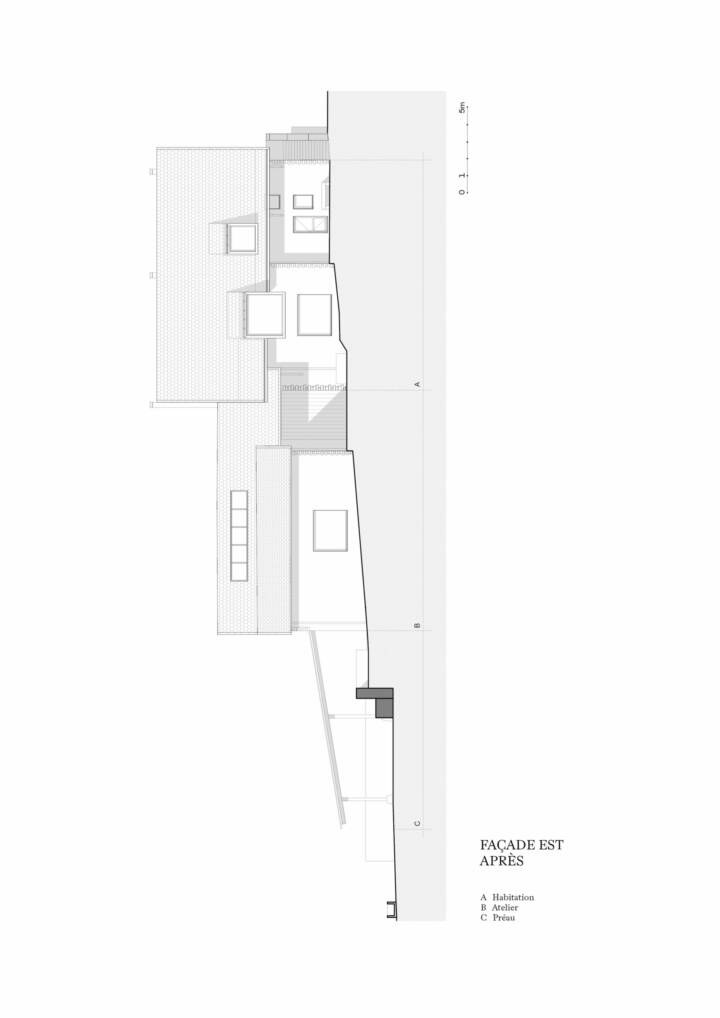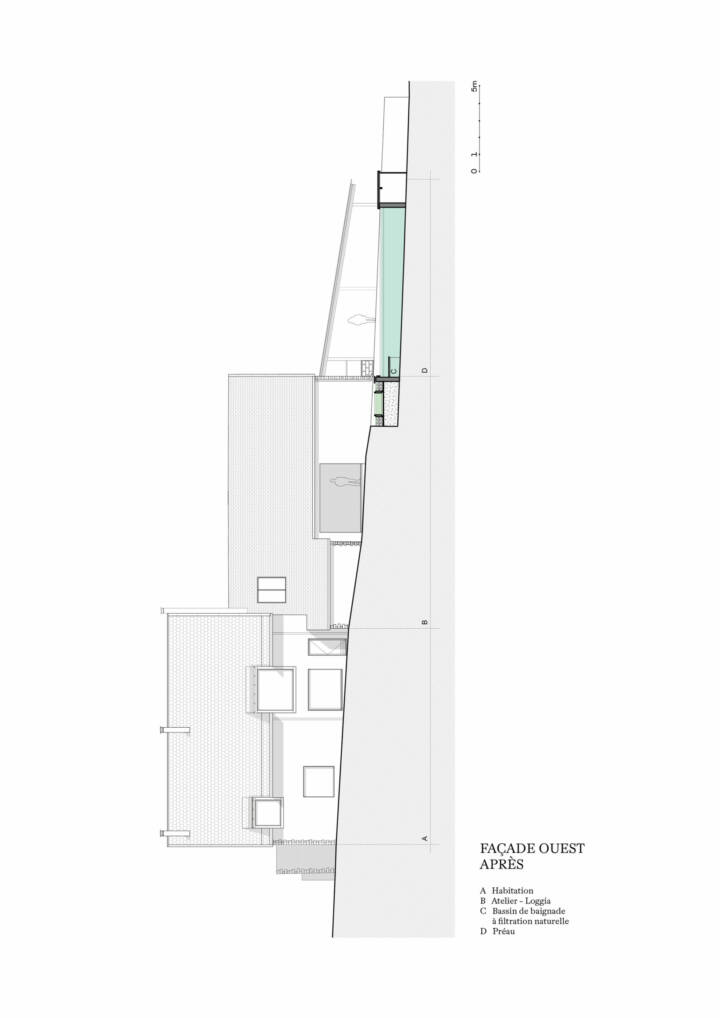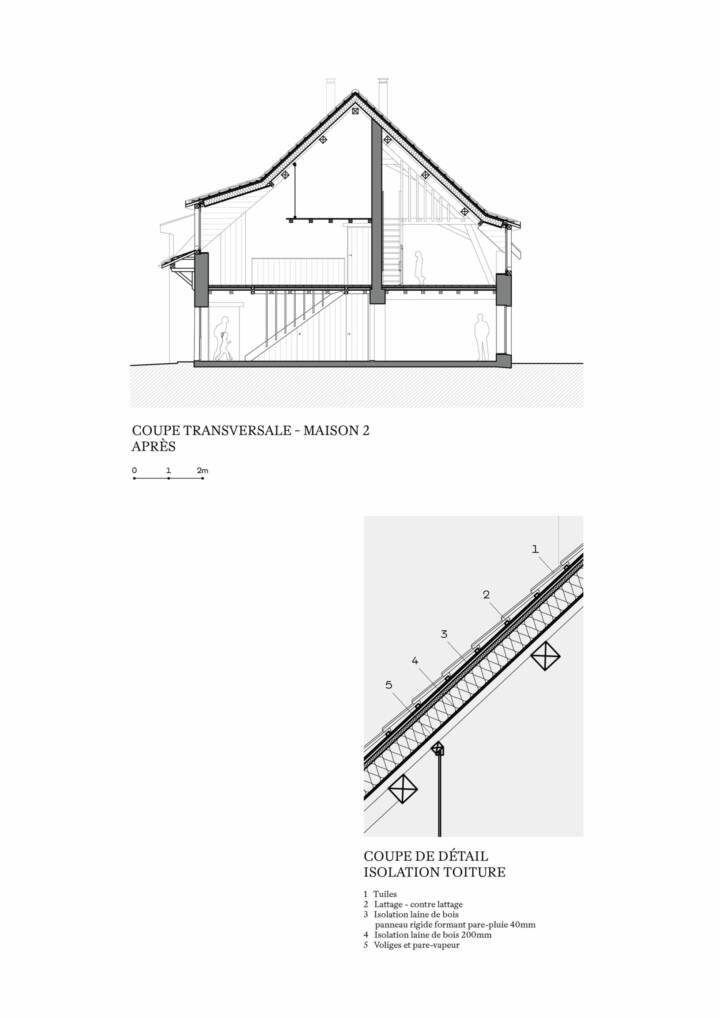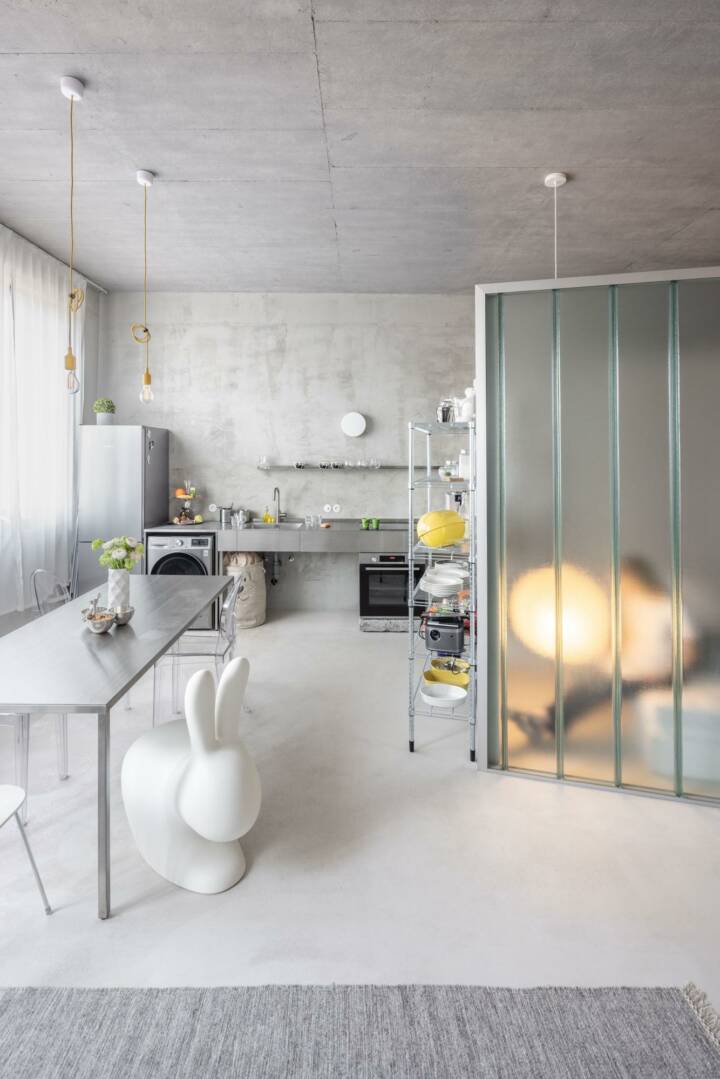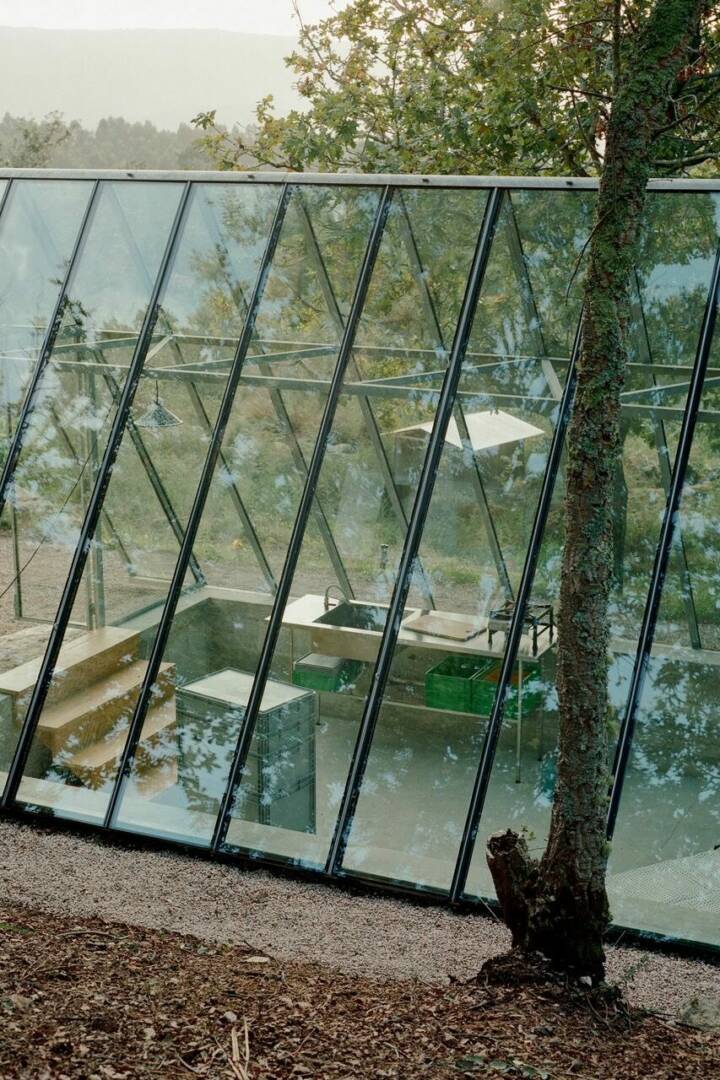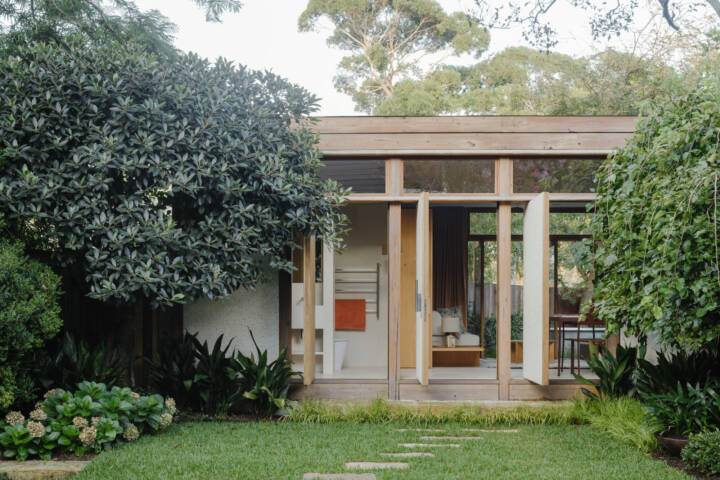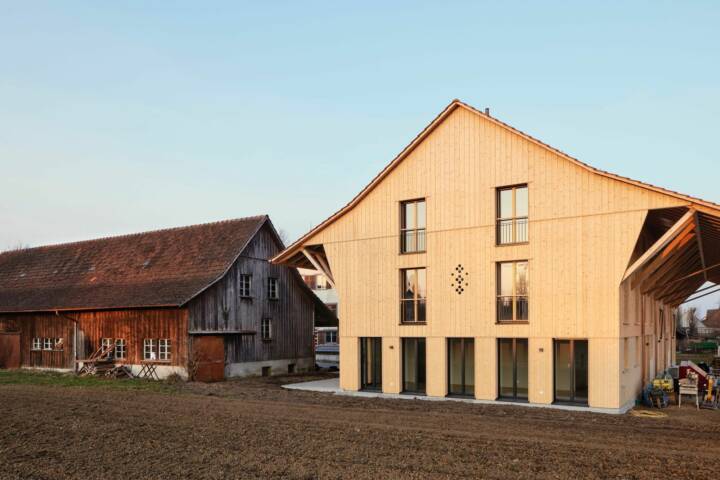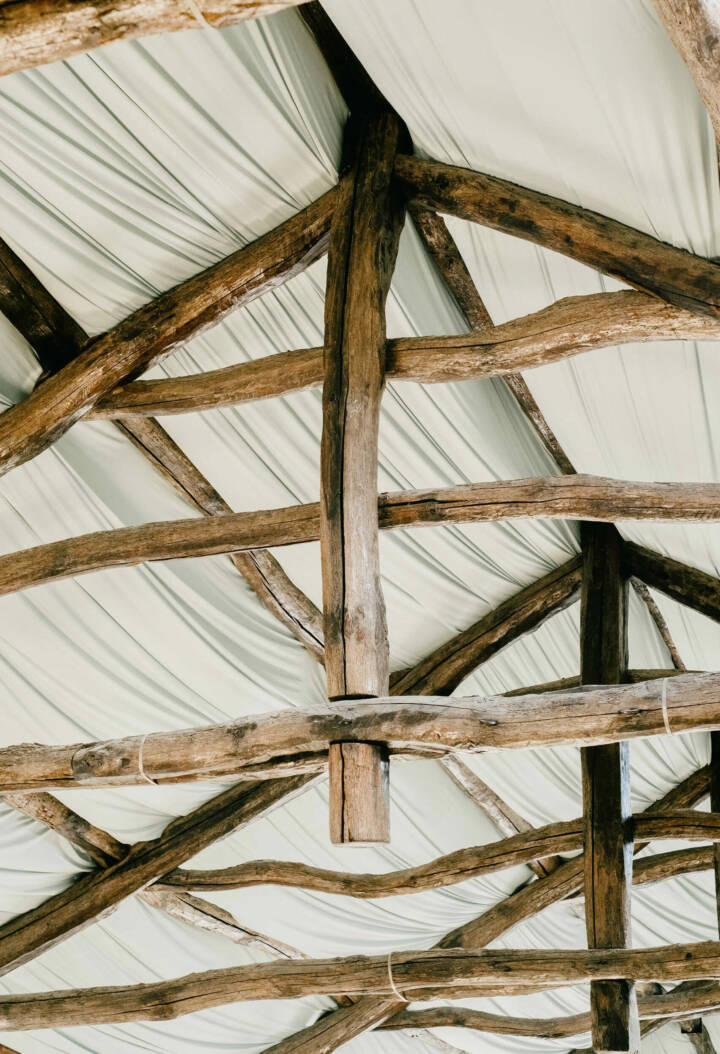Architects: Le Dévéhat Vuarnesson Architectes Photography: Charles Pétillon Construction Period: 2024 Location: Burgundy, France
Introduction – « Erwan Bouroullec asked the LVA architectural studio, founded by Guillaume Le Dévéhat and Charlotte Vuarnesson, to carry out his project to rehabilitate an old farm in Burgundy (France). A long and meticulous project under the sign of benevolence, respect and collective intelligence, to respect the existing, enhance the traces of the past, and ancestral gestures and give this place a character that is both versatile and long-lasting. All the while, integrating the site into its natural surroundings as seamlessly as possible. From this emerges a landscaped house on a gentle slope with an almost 360-degree view of the surrounding valleys and forests: a new generation of peasant architecture of pure, radical beauty, as humble in its language as it is efficient in its environmental qualities. A place capable of evolving into multiple scenarios – for gathering, creating, resting, contemplating… – a resilient place also capable of withstanding time. » Marion Vignal. A home anchored in the landscape, the story of a construction site told through fifteen verbs of the act of building. Understanding the layers of the building, and its memories, and bringing it to a new life without erasing its history. Composing with what’s already there, without distorting it but transforming it.
Read MoreCloseRevealing and magnifying the quality and beauty of rural architecture. Unveiling materials, uncovering structure, preserving the raw state. Tending towards an obvious simplicity, to reach as far as possible the reality of the material. Advancing step by step. Converting, rehabilitating, and setting a framework within which things will continue to evolve. Maintaining the natural slope of the land, which the buildings follow. Gently shaping the ground to create new pathways. Creating areas of natural balance to allow flora and fauna to develop freely. Ventilating the house naturally. Positioning openings judiciously to circulate air. Revealing the building’s open character and letting in natural light. Constructing building and landscape hand in hand. Bringing the landscape into the house, guiding vegetation onto the facades. Experiencing cold, wind, sun and rain. Observing the movement of landscapes and light through the seasons. Preserving the structure of the general organization of buildings around the courtyard. Retaining as many of the existing buildings as possible. Opening up the view from the courtyard to the south by removing the small courtyard, which was collapsing. Replacing part of the asbestos roof of the old stabling to create a large, open, multi-purpose space. Reusing the old silage pit to create a natural swimming pool.
Redoing the framework, softening the light with the warmth of Douglas fir, bringing together new wood and aged stone. Finding the right geometry. Filtering natural light from the workshop hangar with polycarbonate panels. Creating workshops in intermediate, covered, closed, unheated spaces that keep cool in summer and protect from cold and wind in winter. Working in these spaces, warming up around the wood-burning stove. Creating a virtuous path for rainwater, stored in an underground tank and reused to water the garden and supplement the water in the naturally filtered swimming pool. Punctuating the façade with a rainwater basin made from a galvanized steel pasture trough. Embellishing with fish and vegetation. Bringing comfort to the house, insulating the roof from the outside with wood fiber, installing double-glazed woodwork, underfloor heating and wood-burning stoves. Bringing light and sunshine into the house through huge fixed windows. Storing heat through inertia. Keeping cool in summer with blinds.
Reinforcing the existing structure with collaborative floors. Creating large central through rooms, lively or quiet foyers depending on the time of day and activities. Providing rooms for seclusion. Offering several ways in and out of the house. Conserving the house’s stone-dividing walls, adding lightweight wood-frame partitions. Reusing the oak from the removed trusses to create the lintels for the new openings, composing three stair treads with stones found on the land around the house, and recovering the terracotta tiles to place them on the window sills. Rebuilding the networks, using gravel from the local quarry visible from the building site. Considering the future renovation of the beautiful little building, a former dovecote, with its simple volume and lauze-edged roof.
Text provided by the architects.

